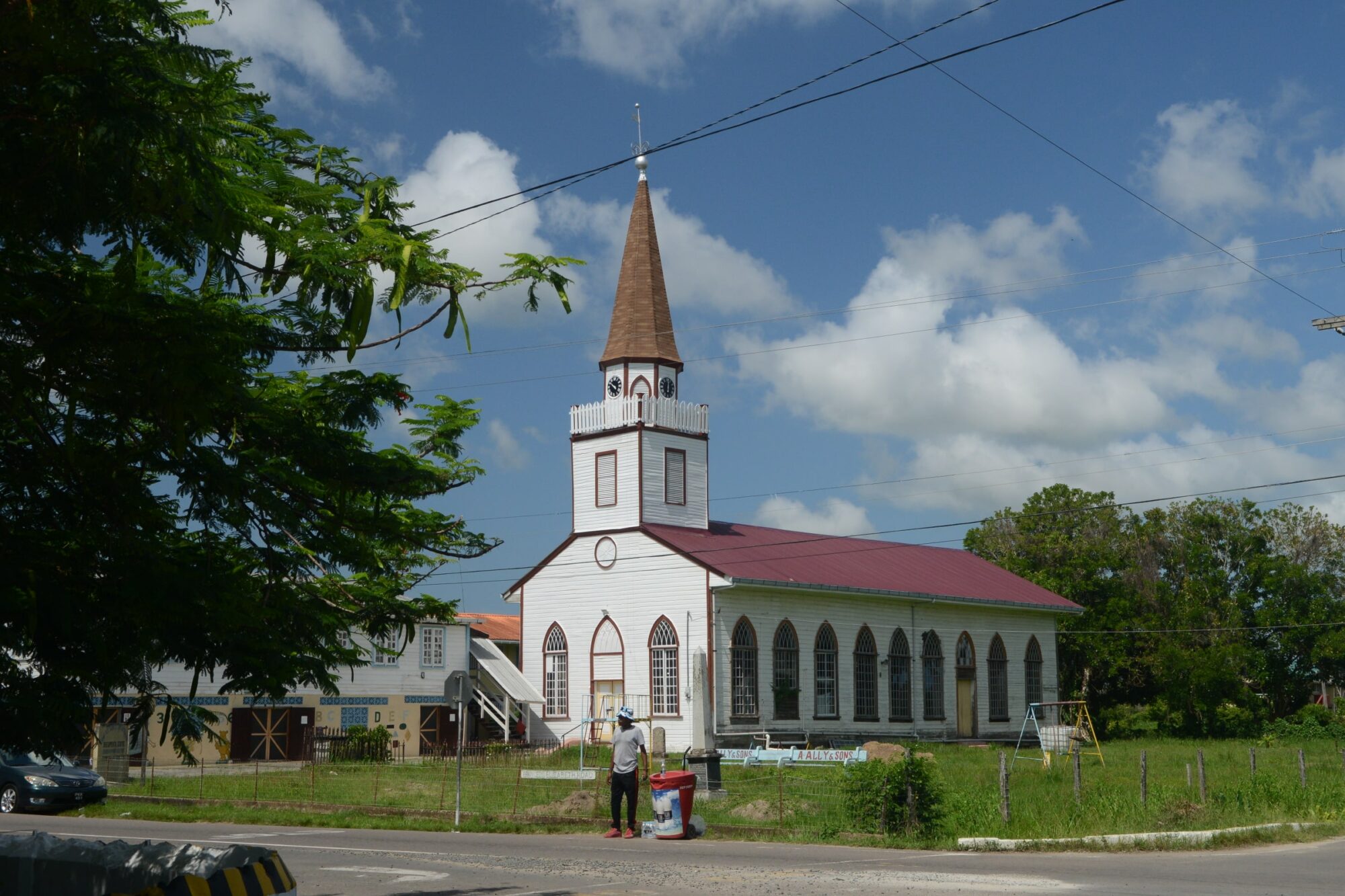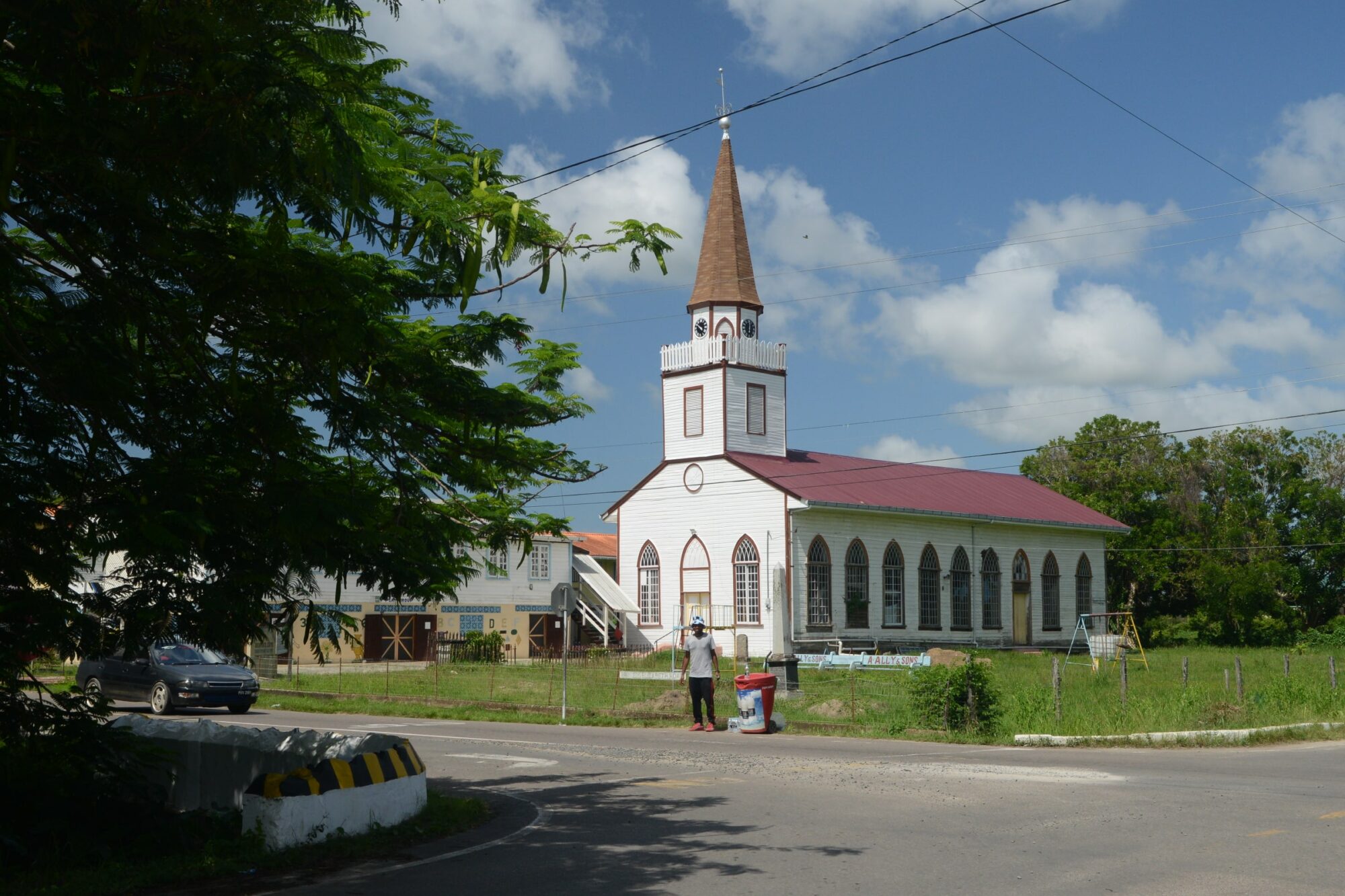Location: New Amsterdam, Berbice
Classification: Religious
Period/ Year Built: 1820
Historical Background / Description:
All Saints’ Scots Presbyterian Church is located on Princess Elizabeth Road, in New Amsterdam, Berbice. It is one of the oldest churches in the town. Prior to the unification of Berbice, Essequibo and Demerara in 1831, the colony of Berbice was regarded as a separate colony and was managed separately from Essequibo and Demerara. In the early 19th century, the settlement consisted of both Dutch and British colonizers and was without a permanent church structure. Church services were held in a house which was described as being in a dilapidated condition.
In July 1818, a petition was laid before the Governor of Berbice, Sir Henry William Bentinck for the colony to erect a proper church for both the Dutch and the Anglicans. The Governor and his Council agreed and provided half of the required sum of subscriptions and the citizens provided the other 25,000 guilders. A portion of Governor Bentick’s Garden was selected as the site and by November 1818, contractors Messrs. John Carruthers and Company started to work on erecting the building. It was completed on April 8, 1820.
The Colony Church, as it was addressed in those days, was consecrated for service in May 1820. The church catered to the needs of both the Dutch Reform Church and the Anglicans, however, overtime the Dutch’s presence in the colony diminished. The Scots began using the church, but due to the lack of Scot and Dutch priests, utilization of the church was not on a regular basis. In 1835, the Scots claimed the Dutch assets in the church due to the fact that there were Scotsmen in the Dutch church. The Anglicans were not pleased with the proclamations made by the Scots and a number of petitions were laid by both the Scots and the Anglicans for the intervention of Governor Sir James Carmichael Smyth to determine the rightful owner of the church.
The ruling went in favour of the Scots and in 1836, the Anglicans were given an inscription to construct their own church under the condition that they renounce all claims to the Presbyterian Church. Architectural features of this single-storey timber structure are its tower and pointed arched windows. The church is one of only few structures in New Amsterdam that boasted a public clock on its façade.



